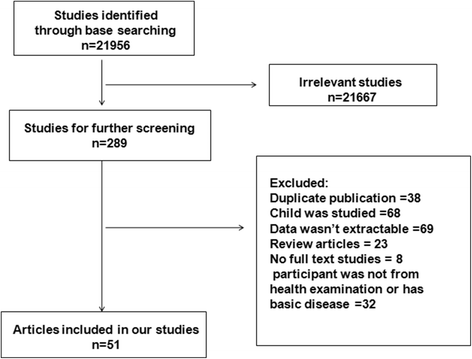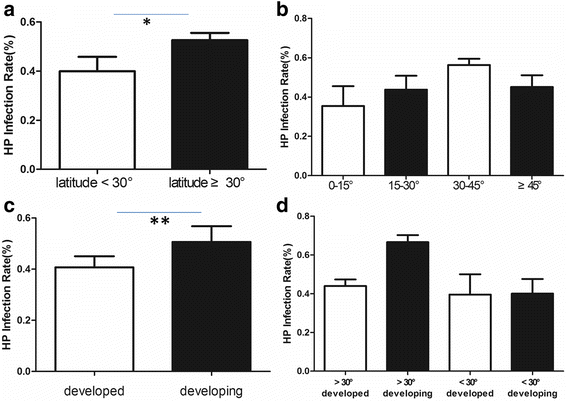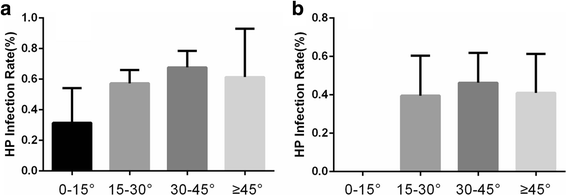Systematic review of the relationship of Helicobacter pylori infection with geographical latitude, average annual temperature and average daily sunshine
- PMID: 29665777
- PMCID: PMC5905136
- DOI: 10.1186/s12876-018-0779-x
Systematic review of the relationship of Helicobacter pylori infection with geographical latitude, average annual temperature and average daily sunshine
Abstract
Background: Helicobacter pylori (H. pylori) infection is a worldwide threat to human health with high prevalence. In this study, we analyzed the relationship between latitude, average annual temperature, average daily sunshine time and H. pylori infection.
Methods: The PubMed, ClinicalTrials.gov , EBSCO and Web of Science databases were searched to identify studies reporting H. pylori infection. Latitude 30° was the cut-off level for low and mid-latitude areas. We obtained information for latitude, average annual temperature, average daily sunshine, and Human Development Index (HDI) from reports of studies of the relationships with H. pylori infection.
Results: Of the 51 studies included, there was significant difference in H. pylori infection between the low- and mid-latitude areas (P = 0.05). There was no significant difference in the prevalence of H. pylori infection in each 15°-latitude zone analyzed (P = 0.061). Subgroup analysis revealed the highest and lowest H. pylori infection rates in the developing regions at > 30° latitude subgroup and the developed regions at < 30° latitude subgroup, respectively (P < 0.001). Multivariate analysis showed that average annual temperature, average daily sunshine time and HDI were significantly correlated with H. pylori infection (P = 0.009, P < 0.001, P < 0.001), while there was no correlation between H. pylori infection and latitude.
Conclusions: Our analysis showed that higher average annual temperature was associated with lower H. pylori infection rates, while average daily sunshine time correlated positively with H. pylori infection. HDI was also found to be a significant factor, with higher HDI associated with lower infection rates. These findings provide evidence that can be used to devise strategies for the prevention and control of H. pylori.
Keywords: Helicobacter pylori; Latitude; Sunshine; Temperature.
Conflict of interest statement
Competing interests
The authors declare that they have no competing interests.
Publisher’s Note
Springer Nature remains neutral with regard to jurisdictional claims in published maps and institutional affiliations.
Figures



References
-
- Konturek PC, Konturek SJ, Brzozowski T. Gastric cancer and Helicobacter pylori infection. J Physiol Pharmacol. 2006;57(Suppl 3):51–65. - PubMed
Publication types
MeSH terms
Grants and funding
LinkOut - more resources
Full Text Sources
Other Literature Sources
Medical

